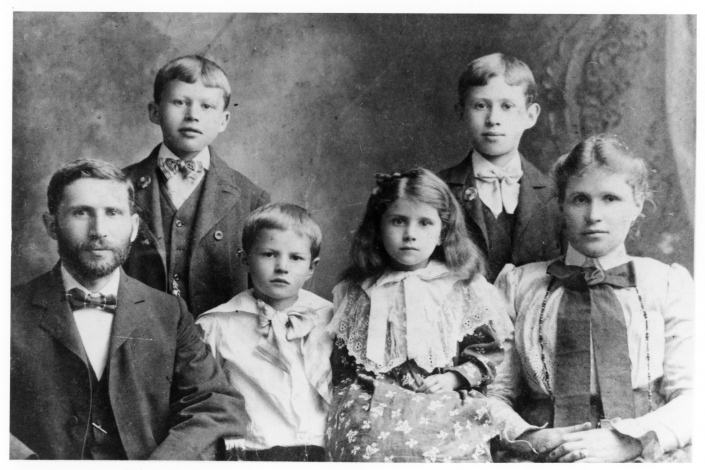Benjamin Brown
 Benjamin Brown (1890–1974) was one of the first practicing Jewish architects in Toronto. Born on 14 January 1890 in what is now Lithuania, he arrived in Toronto at an early age with his family. He attended York Street Public School for only a short time as he soon had to quit school to take a job in a garment factory to help out his impoverished family. Not finding this career to his liking, Brown enrolled in the Ontario School of Art and Design with the intention of becoming an artist in the early 1900s. When this profession proved financially unfeasible, Brown decided to pursue a career in architecture.
Benjamin Brown (1890–1974) was one of the first practicing Jewish architects in Toronto. Born on 14 January 1890 in what is now Lithuania, he arrived in Toronto at an early age with his family. He attended York Street Public School for only a short time as he soon had to quit school to take a job in a garment factory to help out his impoverished family. Not finding this career to his liking, Brown enrolled in the Ontario School of Art and Design with the intention of becoming an artist in the early 1900s. When this profession proved financially unfeasible, Brown decided to pursue a career in architecture.
After completing his high school equivalency, he enrolled in the University of Toronto architectural program (then part of the School of Practical Science), graduating in 1913. Soon after, Brown opened up a practice with fellow architect Robert McConnell, which lasted until the early 1920s. After the partnership ended, Brown set up an independent practice.
Brown was among the first Jewish architects to sustain a successful practice in Toronto during the first decades of the twentieth century. The discriminatory atmosphere in Toronto in the 1920s was such that it was difficult for Jewish professionals to attract clientele. Consequently, Brown's early commissions came primarily from members of the Jewish community. He was soon sought after by many Jewish clients in the clothing trade who commissioned him to design functional loft buildings constructed of reinforced concrete and dressed in a stylish art deco cladding of cut stone and brick. His best-known works include the Tower Building (1927) and the Balfour Building (1929–1930), which stand opposite one another on Spadina Avenue at Adelaide Street West, framing the street and forming an urban gateway to the heart of the garment district.
Brown designed and built over two hundred projects including single-family residences, apartment buildings, and commercial and industrial buildings, as well as synagogues and other community buildings. Many of Brown's buildings were designed in the art deco style with some containing Georgian, Craftsman, Colonial Revival, Tudor, and Romanesque elements. Brown's most important commissions included the Beth Jacob Synagogue (1922), also commonly called the Henry Street Shul, which was built in the Romanesque style and is notable for its stained glass windows and retractable roof that was used on Sukkoth. Some other prominent buildings included Mendel Granatstein’s mansion—that similarly contained a retractable roof for Sukkoth—and the Primrose Club, currently used as the University of Toronto Faculty Club.
Brown chose to live out of the public eye by surrounding himself with close friends and family. Yet, he remained active in Toronto until his retirement in 1955. He died on 11 December 1974. Brown's life’s work of over fifteen hundred architectural drawings now housed at the OJA represents an important resource for the social history of Toronto’s Jewish community as well as the architectural history of the city.

